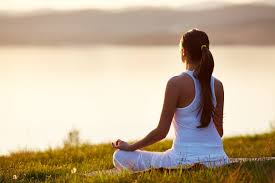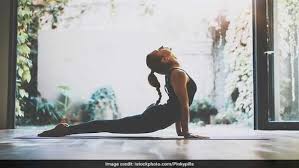Physical Address
304 North Cardinal St.
Dorchester Center, MA 02124
Physical Address
304 North Cardinal St.
Dorchester Center, MA 02124
With its myriad benefits, yoga is a valuable ally in controlling hypertension and enhancing quality of life.

Hypertension, commonly known as high blood pressure, is a chronic medical condition where the force of blood pushing against the walls of your arteries remains consistently too high. This occurs when blood pressure readings regularly exceed 130/80 mmHg, with the first number (systolic) representing the pressure when your heart contracts to pump blood, and the second number (diastolic) measuring the pressure when your heart relaxes between beats.
It’s often called the “silent killer” because it typically has no obvious symptoms, untreated hypertension can gradually damage blood vessels and organs throughout the body, significantly increasing the risk of serious health problems including heart disease, stroke, kidney damage, and vision problems.
High blood pressure (hypertension) silently affects millions of people globally. Though medications remain a common treatment, research increasingly supports using lifestyle changes, especially yoga practice, as part of a comprehensive management strategy.
Since hypertension often causes no obvious symptoms while damaging the body, finding effective treatments is crucial. For mild cases, these natural approaches might even help some patients avoid medication, while those with more severe hypertension can use them alongside traditional medical treatment to optimize their health outcomes.
The practice of yoga serves as a powerful tool for both wellness maintenance and the control of ongoing health challenges, particularly high blood pressure. One of its fundamental strengths lies in its ability to induce deep relaxation and reduce stress levels – key factors for anyone dealing with hypertension.
Since stress is known to directly raise both heart rate and blood pressure, finding effective ways to manage it becomes especially vital for those monitoring their blood pressure levels.
Yoga involves various postures (asanas), breathing exercises (pranayama), and meditation techniques. Each of these elements can help mitigate the factors contributing to hypertension
The practice of yoga encompasses three key elements that can naturally support blood pressure management;
Breathing exercises, known as Pranayama, work directly with the body’s nervous system to create a relaxation response. Two particularly effective techniques are the deep “ocean breath” of Ujjayi and the balancing practice of alternate nostril breathing, both of which can help steady heart rate and promote calmness.

The mindfulness and meditation components of yoga practice offer powerful tools for blood pressure control. These quiet, contemplative practices trigger beneficial changes in body chemistry, including reduced stress hormone production, while building mental resilience and emotional balance.

The physical component of yoga involves gentle yet effective body positions that serve multiple purposes. Poses like child’s pose, forward folds, and downward-facing dog not only build strength and flexibility, but also help release physical tension, improve blood flow, and create a sense of deep relaxation throughout the body.

To read more, open the link below :